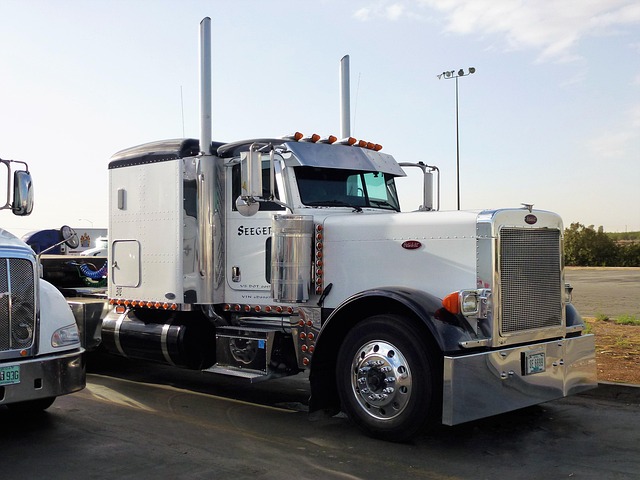Registering Your Car in California: Step-by-Step Guide with VIN Verifier
Looking to register your car in California? This guide breaks down the process step-by-step. From understanding the registration requirements to gathering essential documents, including a Vehicle Iden…….

Looking to register your car in California? This guide breaks down the process step-by-step. From understanding the registration requirements to gathering essential documents, including a Vehicle Identification Number (VIN) verifier, and submitting applications with associated fees, we cover it all. Learn how to finalize your vehicle’s registration efficiently. Utilize our tips to navigate the process smoothly and ensure compliance with California regulations.
- Understanding the Registration Process
- Gather Necessary Documents
- Utilize a VIN Verifier
- Submit Applications and Fees
- Finalizing Your Vehicle's Registration
Understanding the Registration Process

Understanding the Registration Process in California
Registering a car in California involves several steps that require meticulous attention to detail. The process begins with gathering essential documents, including proof of ownership, insurance, and identification. Once these are ready, you’ll need to visit a California Department of Motor Vehicles (DMV) office or use their online services for vehicle registration. A key component of this process is the verification of your Vehicle Identification Number (VIN). Using a reliable VIN verifier, like a mobile VIN inspection service, ensures that the vehicle’s history and specifications match those reported by the manufacturer.
This step is crucial as it helps prevent fraud and ensures you’re registering the correct vehicle. Mobile VIN verification services offer convenience by allowing you to complete this part of the process from anywhere, saving time and effort compared to traditional methods. By combining these modern tools with DMV procedures, car registration in California becomes a smoother, more efficient experience for all involved parties.
Gather Necessary Documents

Before you begin the registration process, it’s crucial to gather all the essential documents required by the California Department of Motor Vehicles (DMV). One critical step is verifying your vehicle’s unique identifier—the Vehicle Identification Number (VIN). Utilize a mobile VIN verifier or conduct a VIN inspection to ensure the accuracy of this number, as it’s vital for identifying your car. This can be done easily through various online tools or by downloading dedicated apps that provide instant and reliable results.
Once you have confirmed your VIN, collect important paperwork such as the title, registration certificates from previous states (if applicable), proof of insurance, and a valid driver’s license. Additionally, you’ll need to fill out the necessary DMV forms for car registration. Having these documents ready ensures a smoother process and allows you to quickly complete your California vehicle registration.
Utilize a VIN Verifier

Using a VIN verifier is an essential step when preparing to register your car in California. The Vehicle Identification Number (VIN) is unique to each vehicle and acts as its fingerprint, providing critical information about its make, model, year, and history. A reliable VIN verifier can help ensure that the vehicle you’re planning to register is genuine, free from damage, and hasn’t been involved in any accidents or scams.
In California, you can utilize a mobile vin inspection service, allowing you to verify the VIN of a car conveniently at your location. This method is particularly beneficial when purchasing a used car, as it helps protect against potential fraud. With just a few simple steps, a professional can provide you with an accurate vehicle history report, giving you peace of mind and the confidence to proceed with the registration process.
Submit Applications and Fees

To register your car in California, you’ll need to submit a variety of applications and fees. The process begins with gathering essential documents, including proof of ownership, a valid driver’s license, and current vehicle insurance. Once prepared, you can initiate the registration by visiting a California Department of Motor Vehicles (DMV) office or using their online services.
Among the required forms is the Application for Title and Registration, which must be completed accurately. You’ll also need to provide a $50 registration fee, along with any applicable emissions testing fees, if your vehicle is over 7 years old. For added convenience, many individuals opt for a mobile VIN verifier to validate their vehicle’s history before submission, ensuring the process is swift and accurate.
Finalizing Your Vehicle's Registration

Once you’ve gathered all the necessary documents and passed the vehicle inspection (also known as a smog test), it’s time to finalize your car’s registration. In California, this involves submitting your application along with the required fees to the Department of Motor Vehicles (DMV). You’ll need to provide your Vehicle Identification Number (VIN) for verification purposes—a step that can be conveniently completed using a mobile VIN verifier or through the DMV’s online services. This process ensures that your vehicle meets all the state’s safety and environmental standards before it’s officially registered and ready for California roads.
After the registration is finalized, you’ll receive your license plate and registration documents in the mail. It’s crucial to keep these documents on hand, as they’re essential for proof of ownership and registration when driving or renewing your vehicle’s registration in the future. A mobile VIN inspection can also be a handy tool during this period, allowing you to verify your vehicle’s status and history whenever needed.
Registering your car in California is a straightforward process, provided you have all the required documents and follow the steps outlined above. Remember to utilize a VIN verifier to ensure the vehicle’s history is clear, and submit all applications and fees accurately. Once finalized, you’ll have a valid registration, making your vehicle legal on California roads.







